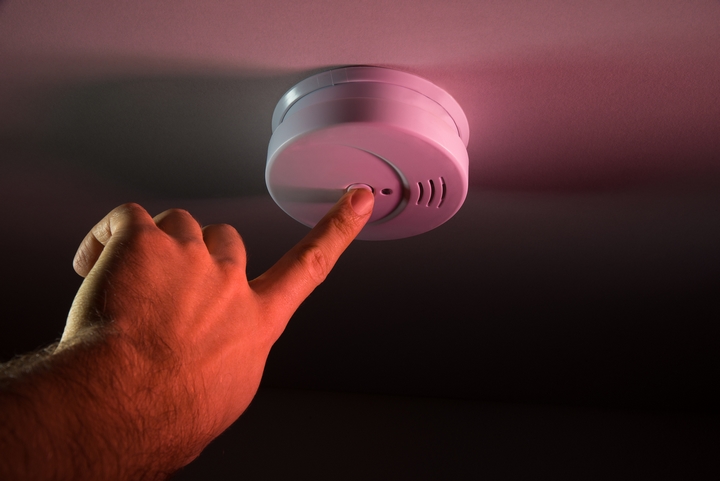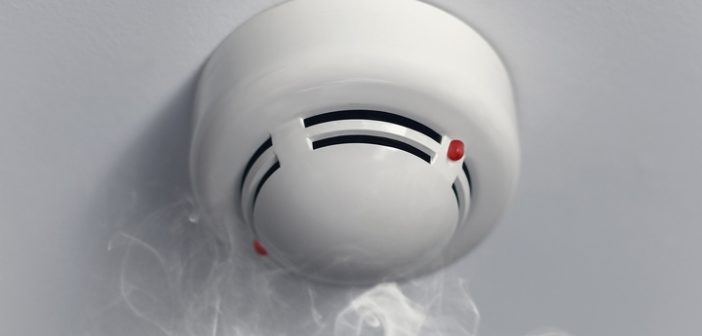Smoke detectors are mandatory in all homes, including bedrooms, hallways, and every level. They reduce the risk of dying in a fire by over 50% and, as long as they are properly installed and maintained, are among the least expensive ways of providing an early warning during a fire.
If you live in a newer home, you will have smoke alarms all over the place. You need to upgrade to protect your family and friends in an older home. Understanding the different types of smoke detectors can empower you to make the right choices for fire protection.
Not many people understand how these devices work, and what do smoke detectors detect? Here is an explanation about what smoke detectors can detect:
Smoke detectors detect smoke.
 This is the type of fire alarm system we are all familiar with. A smoke detector is typically designed to detect smoke particles in the air that trigger an alarm to alert people to a hazardous situation.
This is the type of fire alarm system we are all familiar with. A smoke detector is typically designed to detect smoke particles in the air that trigger an alarm to alert people to a hazardous situation.
There are smoke detectors and smoke alarms. Smoke detectors are sensing devices that pick up the presence of smoke and send a signal to activate fire alarms and even contact monitoring services or the fire department.
A smoke detector has an alarm and visual warning system onboard to alert people in the fire area. These are typical in houses. There are three types of smoke detectors:
Smoke Detector Type #1: Photoelectric Detectors
This detector works with a photo beam that points away from the sensor. If smoke comes into the compartment and reflects the light onto the sensor, it will trigger the alarm.
The sensor is positioned at a 90-degree angle, so it takes smoke particles to scatter the light so that some will hit the sensor. Photoelectric detectors are ideal for smoky fires that smoulder for long periods.
Smoke Detector Type #2: Ionization Detectors
For fast-moving fires, an ionization detector works best. An ionization chamber inside the detector where a small amount of radioactive material is passed between two electrically charged plates. This ionizes the air and creates a current to flow. The radioactive material is a radioisotope, usually americium-241.
A slight amount of radiation is given off that does not pose a health risk. In the presence of smoke, the flow of ions is disrupted, which reduces the current and triggers an alarm. Quick, raging fires are better detected with this type of technology.
Smoke Detector Type #3: Duel Sensors
A duel sensor detector uses both photoelectric and ionization technology for detecting smoke. If you only have one type, you can install a secondary unit beside the existing one or change it out for a duel detector. All three detectors give comprehensive protection to your home.
Smoke detectors detect heat.
 There are smoke detectors that also have a heat-detecting function. These give occupants of the home another way for the fire to be detected, just by the presence of heat. You can also get a stand-alone heat detector installed alongside your smoke detector or put it in a prone place to dust or steam. A regular smoke detector may give you false alarms because of this.
There are smoke detectors that also have a heat-detecting function. These give occupants of the home another way for the fire to be detected, just by the presence of heat. You can also get a stand-alone heat detector installed alongside your smoke detector or put it in a prone place to dust or steam. A regular smoke detector may give you false alarms because of this.
Heat detectors will sound an alarm when it detects convected thermal energy. The heat sensors inside this device come in two different types.
Fixed Temperature
When there is significant heat in a certain area, eutectic alloys inside the unit will liquify and sound an alarm. It is adjustable, so you can set the temperature.
Rate Of Rise
If there is a sudden increase of heat in an area, and ROR detector will sound an alarm. The rate increase is usually around 10 degrees Celsius and is picked up by heat-sensitive thermocouples. You can set it at a much lower threshold than a fixed temperature detector.
Smoke detectors detect carbon monoxide.
 Carbon Monoxide is a silent killer because it is colourless and odourless. It can build up in a home if your vehicle is running in a garage, if you have a wood fireplace, or if you are burning natural gas on a stove.
Carbon Monoxide is a silent killer because it is colourless and odourless. It can build up in a home if your vehicle is running in a garage, if you have a wood fireplace, or if you are burning natural gas on a stove.
You can get smoke and CO combination detectors or stand-alone units of CO. They have various sensors for different alerts, including:
Biometric Sensor
A gel inside will change colour when absorbed carbon monoxide, triggering an alarm.
Electrochemical Sensor
A chemical solution with electrodes senses changes in electrical currents from carbon dioxide and sends a signal to the alarm.
Metal Oxide Semiconductor
In the presence of carbon dioxide, the electrical resistance on a silica chip’s circuitry lowers and signals the alarm.
A CO alarm cannot be turned off until all the carbon dioxide is cleared from the area.
Smoke detectors are usually hard-wired in, as in all new construction, or battery operated and mounted anywhere you need them. Stand-alone CO alarms can also be plugged into a wall socket.




